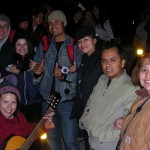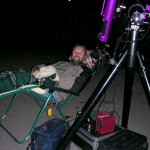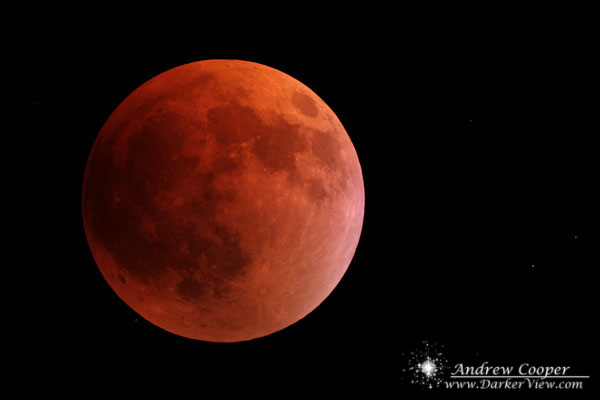A good lunar eclipse high in the sky. This was something I have not seen for a while. I have seen several lunar eclipses over the last few years. But they always seemed to be low in the sky from Tucson, rising with the eclipse already in progress. Thus as the date of this eclipse approached I was planning to view it properly. The eclipse would be high in Hawaiian sky, transiting with the Moon in totality. Perfectly placed to view the entire eclipse under the most ideal conditions.

There was quite the crowd gathered at the Mauna Kea VIS. No surprise, the VIS is the best place on the island to view anything astronomical. Above the clouds and tropical haze the side of Mauna Kea offers a clear view of pristine skies and several telescopes available for anyone to look through. What was surprising was the weather, while the skies are usually clear the VIS can be very cold, and if you add wind the conditions can be miserable. This was not the case! It was cool but not cold and there was no wind beyond a slight breeze.

The proper way to watch the several hours of a lunar eclipse is in comfort. Thinking ahead I brought a lounge chair and setup properly where I could monitor the camera and see the frames on the LCD screen as they came in. This worked perfectly. I could view each frame as it was taken without getting up and adjust settings on the camera simply by reaching over. Between each frame just lay back and enjoy the view.
Well, maybe I am understating the amount of work, things were not that relaxed and the camera took a fair amount of tending. I could not get the camera to autoexpose well with a single bright object in an otherwise black frame. The camera insisted on overexposing the Moon badly, even with automatic bracketing the situation did not work until I just put the camera in manual and adjusted the exposure regularly. The scope did not track perfectly and I did need to adjust the position a few times each hour. But the setup and tending were worth it as the resulting pictures are quite satisfying.

As the eclipse wound down word of another spectacle made its way to me, the glow of something odd seen to the south. This got me out of my comfortable chair to go and see. Surprisingly the usual solid clouds on the east side of the island had parted and the brilliant golden glow of fluid lava was to be seen! There was some confusion as to what it was, some thought it was the lights of Hilo, but there was no confusion to those of us familiar with the view from Hale Pohaku.
The latest lava flow from a rift on the eastern flank of Kilauea was a river 100m wide and several miles long, even from our vantage point thirty miles away we could clearly see the stream. We could see the lava falls near the head of this river with binoculars as well as most of the course. The view of an eruption and an eclipse was and extraordinary reminder of the dynamism of the earth and universe around us.
Above is one of my photos from mid-totality taken with the 90mm APO and a Canon 20Da DSLR, note that several stars frame the moon. Check out a few more pictures of the eclipse from the visitor center by Simona Vaduvescu


